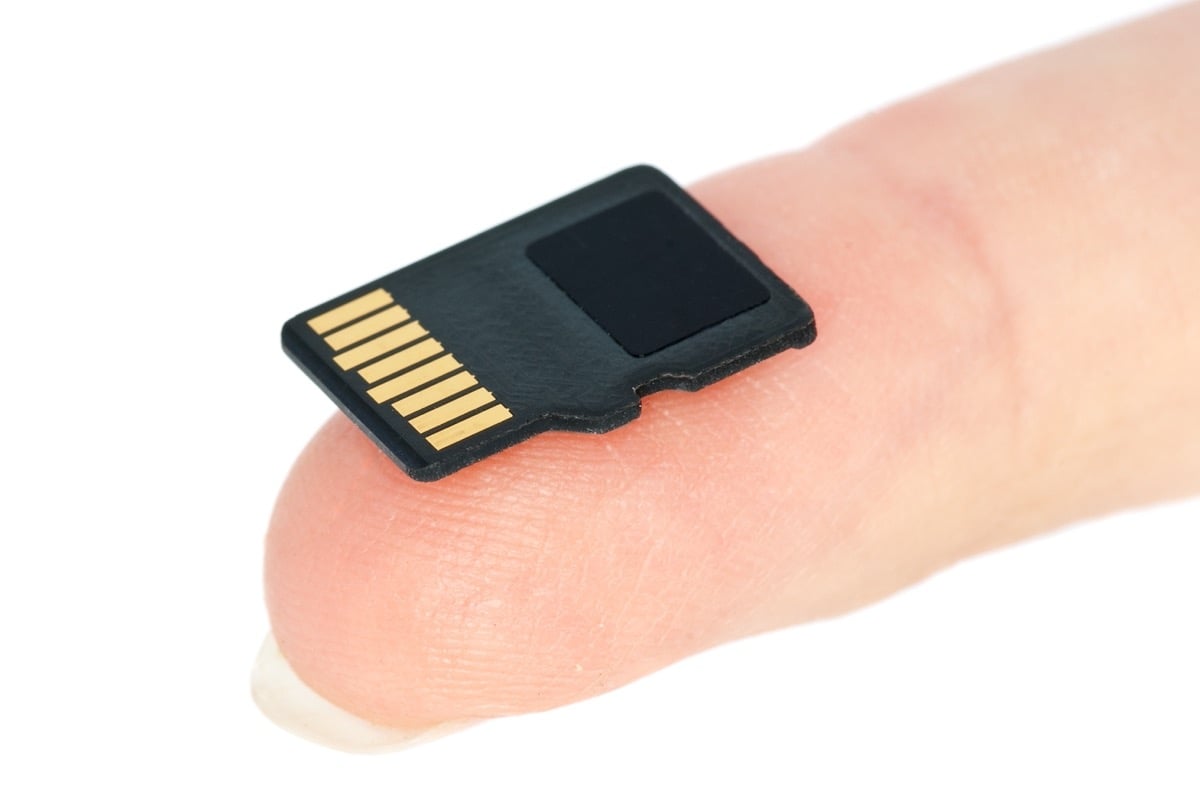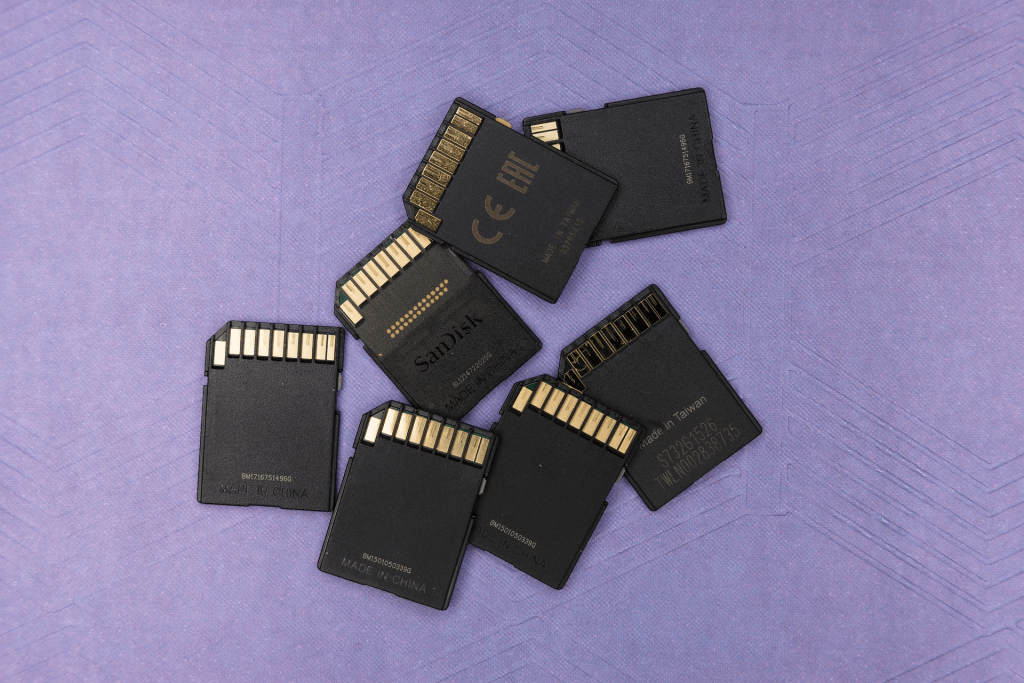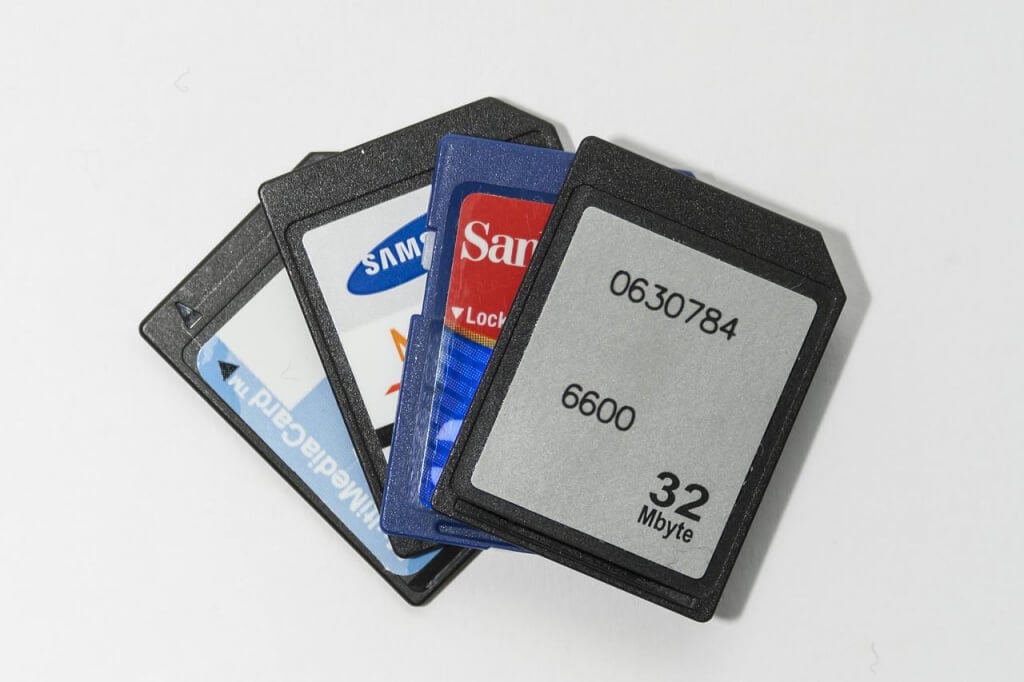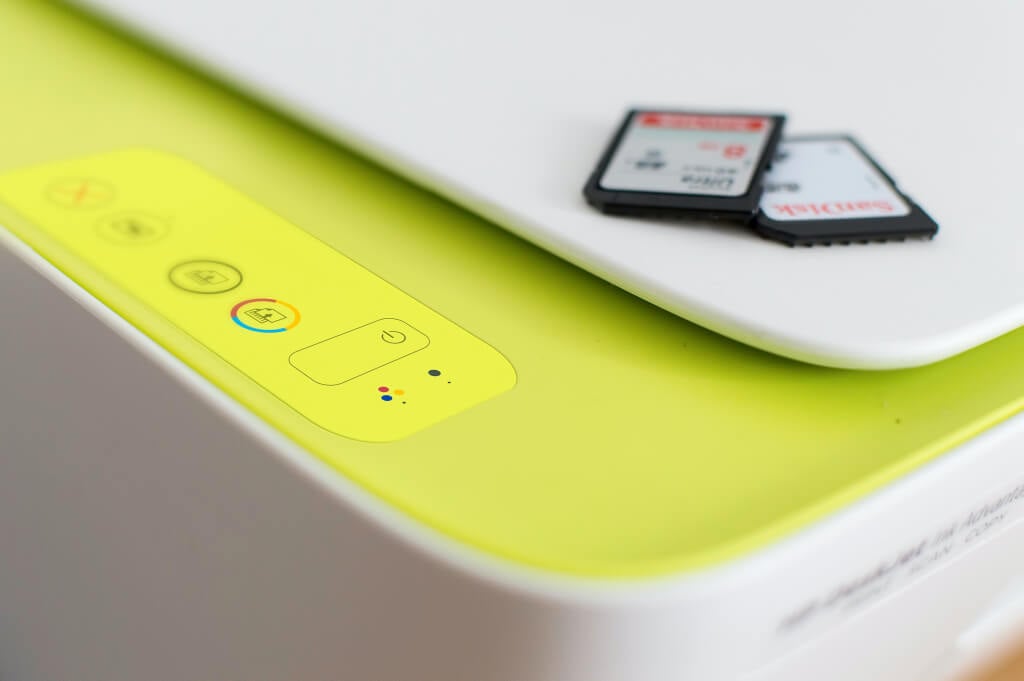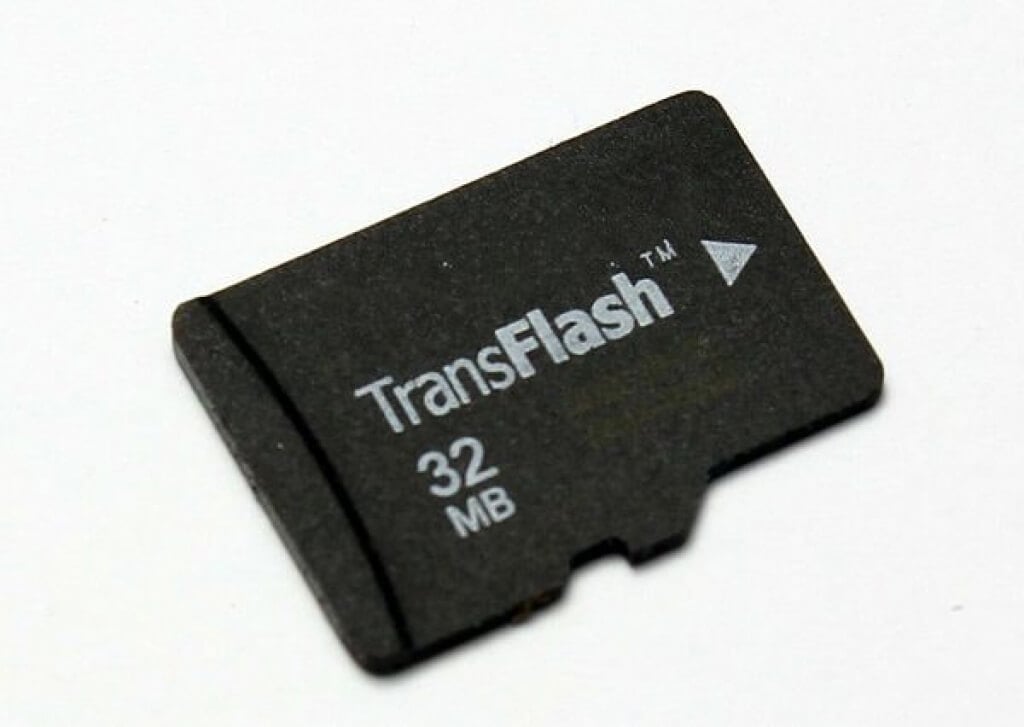There is a confusing variety of memory cards in use today—SD cards, Micro SD cards, Mini SD cards, and SDHC cards. The TF Card is a curious outlier in this lineup. Here’s how they differ from other cards and why you might use one.
Why Do SD Cards Have So Many Names?
SD (Secure Digital) cards are storage devices developed by Secure Digital Association. Formed as a joint venture between SanDisk, Panasonic, and Toshiba, SDA is tasked with creating semiconductor flash memories (like SSD hard drives).
As the technology evolved, these flash memory cards started being used with various devices, from MP3 players to mobile phones to GPS devices. As a result, newer versions of the SD card got larger capacities. These capacities were denoted by suffixes like HC (High Capacity), XC (eXtended Capacity), and UC (Ultra Capacity).
As this includes all cards with storage space over 2 GB, most SD cards you see in use today will have one of these suffixes attached to their names. Micro SDHC cards are the most prevalent, with the top-capacity versions being SDXC cards.
What Is a TF Card Used For?
As mobile devices grew increasingly popular, it became clear that the future of computing had to target that segment. But SD memory cards, even Mini SD cards, were too large for the rapidly shrinking cell phone. So a new standard had to be developed.
SanDisk and Motorola worked together to create T-Flash cards, which boasted capacities of up to 512 MB in a size smaller than a fingernail. A trademark dispute with T-mobile led to the name becoming TransFlash card, which was often shortened to just TF card.
As the first Motorola phone rolled out with the brand new TF card, interest rose in the technology. The SD Association ultimately acquired the standard, rechristening it to the Micro SD card.
This resulted in the release of the world’s smallest memory cards, suitable for use with gadgets of all kinds. Apart from Android and iOS smartphones, Micro SD cards were adopted by things like video game consoles and dashcams.
How Are Micro SD Cards Different?
Micro SD cards and TF cards have the same functionality. Most of the SD cards used today are Micro SD cards, thanks to the popularity of smartphones and digital cameras.
A TF memory card is simply an older version of the Micro SD, with generally lower capacity. They use the same SD card slot – any card reader (including internal card readers in laptops) that accepts a Micro SD card will also take a TF card without any issues.
Micro SD cards will usually perform better than TF cards because SDA is continuously developing them. Be it storage capacity or read-write speeds, Micro SD cards have come a long way, leaving the older TF cards in the dust.
Can You Still Buy TF Cards?
Finding an SD card without the official Micro SD branding today is difficult. The introduction of HC and XC memory cards completely transformed the market, and most memory cards you can buy today have storage capacities of over 8 GB.
As such, there’s no reason for any manufacturer to continue selling outdated TF cards, which were released before high-capacity memory cards were a thing. The only way to get a TF card today is if you already own one from its initial launch.
How Do TF Cards Differ From SD Cards?
TF cards are just the name of an early iteration of the Micro SD card. It uses the same slot, works the same way, and even has a similar form factor.
The only difference lies in technical specifications. This is because Micro SD cards have continued to get updates from the SD association, while the only TF cards in circulation are the ones sold in the early days.
If you still possess a TF card, you can continue using it with any smartphone or card reader without any hassle. However, remember that their performance will not be on par with any modern Micro SD card, and it would be a good idea to upgrade.
